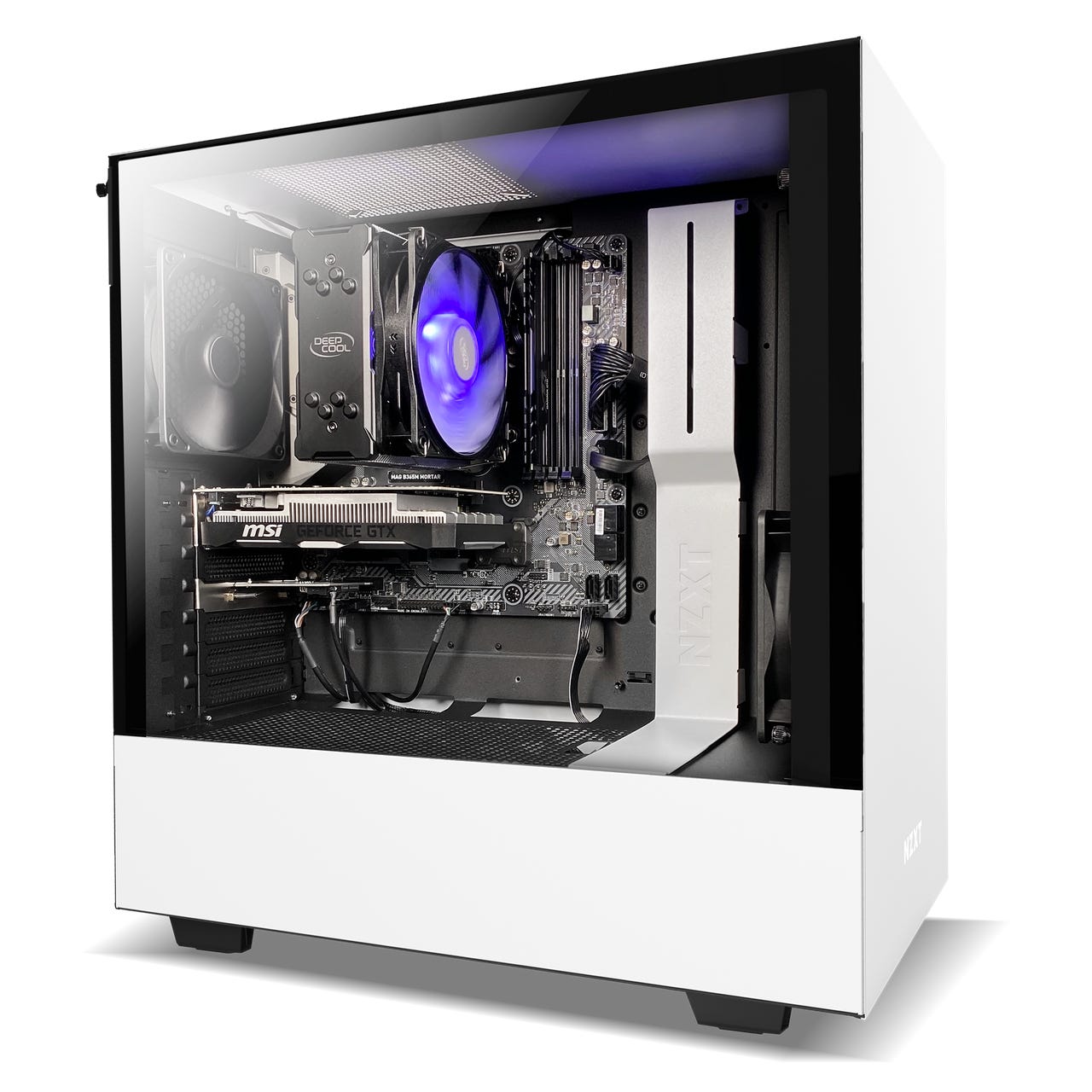NZXT looks to lure beginning gamers with its $699 Starter PC desktop


NZXT Starter PC
Featured
With companies without gaming pedigrees like Acer and Lenovo offering entry-level PCs for budding gamers, manufacturing veterans have to compete for budding gamers who aren't ready (or able) to spend more than $1,000 for a decked-out gaming desktop. NZXT, long known for its cases and other gaming components, isn't beating around the bush with its gateway system's name, calling it the Starter PC rather than the evocative extreme-sounding monikers typical of gaming PCs.
As with other budget friendly gaming systems, the Starter PC makes compromises with regard to components to keep prices down, but still provides a decent graphics card to allow suitable gaming performance. In this case, NZXT has an Intel Core i3-9100F, a quad-core previous generation budget processor, instead of a 10th-generation Core i5 or i7 in its base configuration. Likewise, a standard 8GB of RAM is on board, along with a 512GB M.2 SSD and no traditional hard drive for additional storage.
You do get an Nvidia GeForce GTX 1650 graphics card, which NZXT claims can provide 181 frames per second (FPS) playing Counter-Strike: GO, 161FPS on League of Legends, 67FPS on Fortnite, and 62FPS for Call of Duty: Modern Warfare. As the Starter PC is built around NZXT's H510 mid-tower case, there is room to grow with multiple drive bays and expansion slots available if you get the upgrading bug.
If you have a slightly bigger budget and like NZXT's approach, there are (somewhat ironically) higher-end Starter PC configurations than the true starter Starter PC. For an additional $200, the Starter PC Plus swaps out the Core i3 CPU for a six-core i5-9400F, doubles the RAM, and swaps in a GeForce GTX 1660 graphics card. For $999, NZXT doubles the solid-state storage to 1GB and upgrades the graphics to a GeForce GTX Ti GPU. Of course, your choices expand greatly in the gaming PC world when you get close to the $1,000 threshold, so gamers will have many more options, but NZXT is hoping its reputation as a long-time gaming hardware company could give it an edge over Johnny-come-latelies.
.